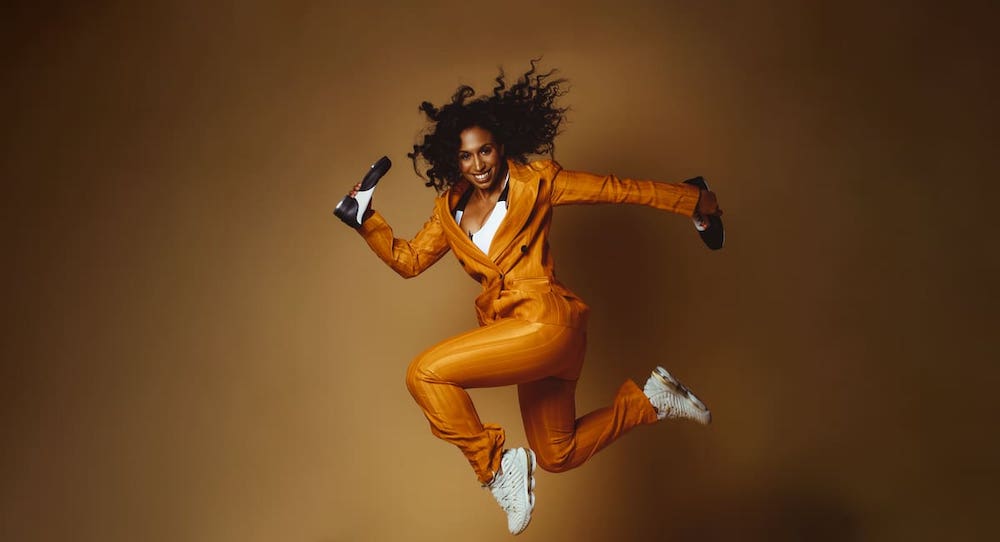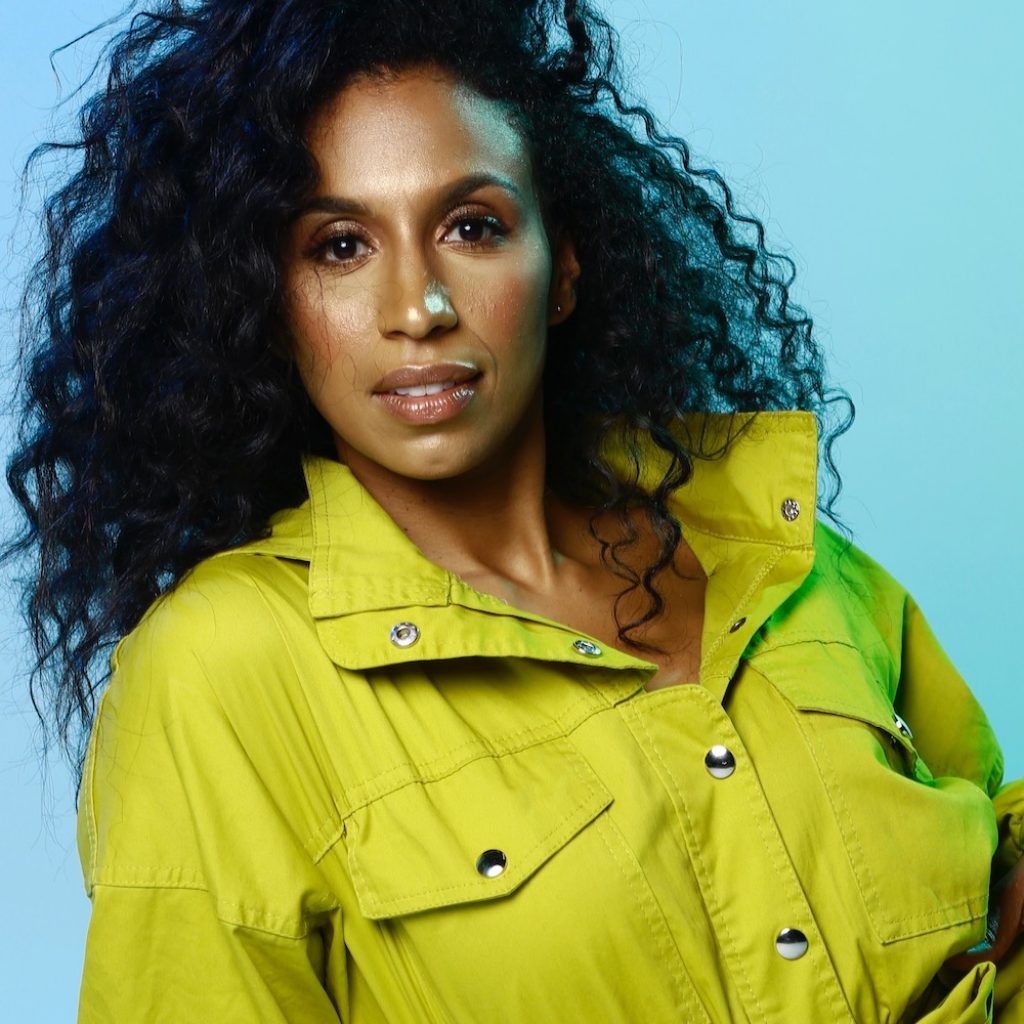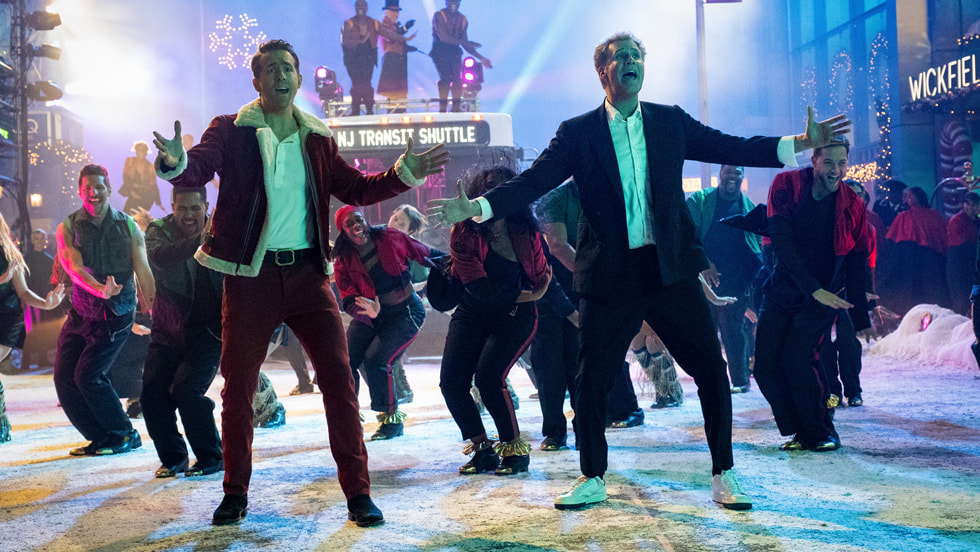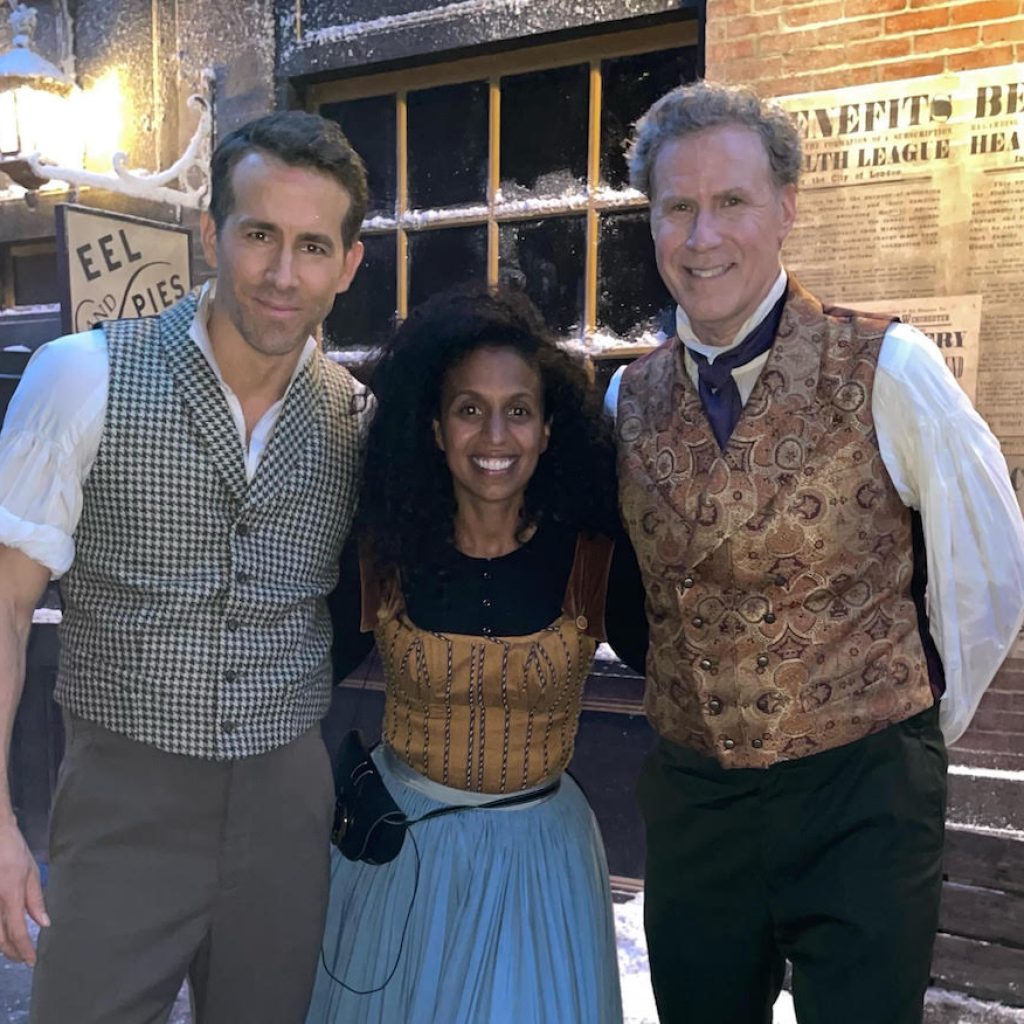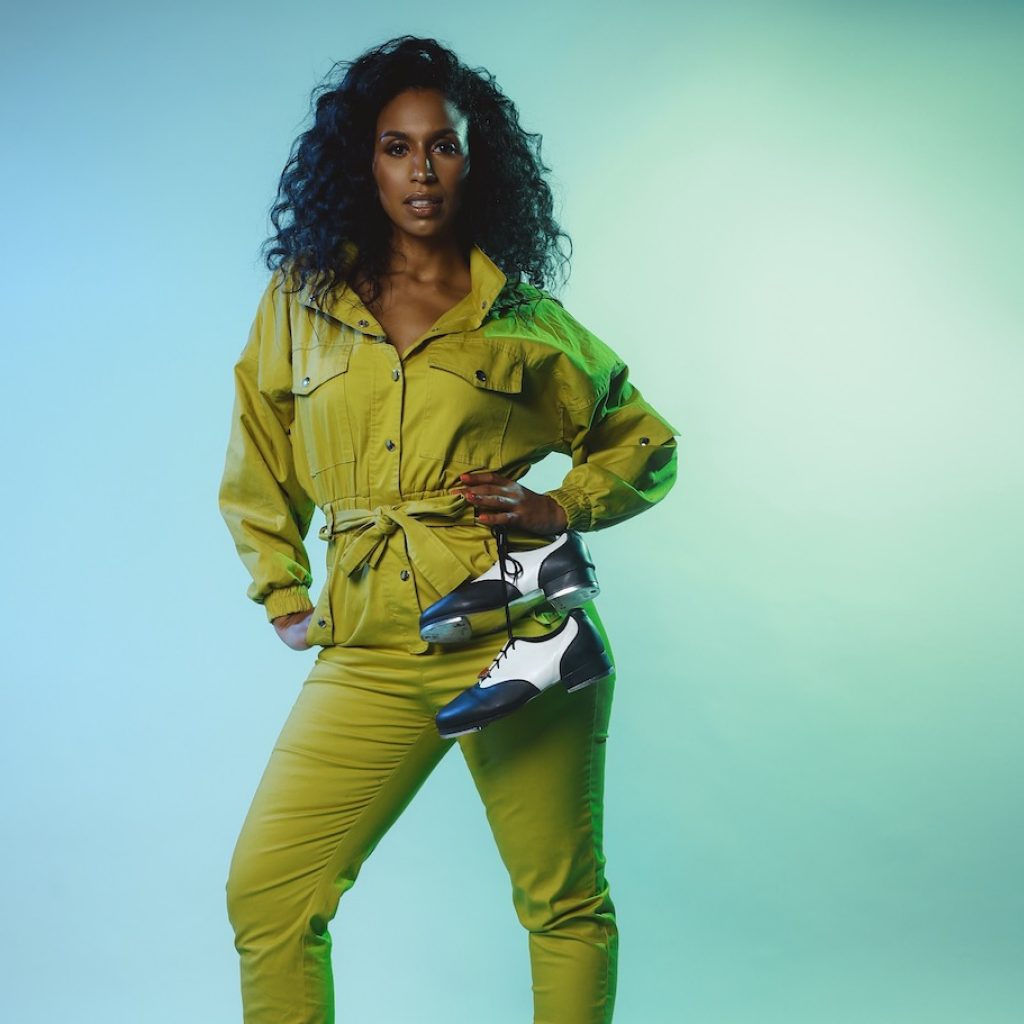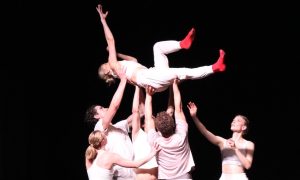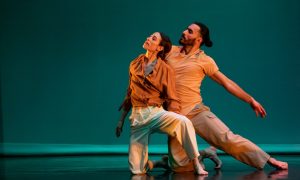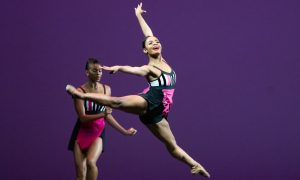Spirited is a new Christmas movie starring Will Ferrell, Ryan Reynolds and Octavia Spencer, choreographed by Chloe Arnold of the Syncopated Ladies. The film features fierce tap dancing and 90 fabulous dancers, and Dance Informa had the opportunity to speak with Arnold herself about the process.
Can you give us a quick rundown of your dance journey? How did you get started, and what major steps led you to where you are today?
“I started dancing when I was six years old in Washington, D.C., and like most kids, I took ballet, tap and jazz. When I was around eight, my mom started to realize that I had an affinity for tap, and she tried to nurture that. We went to see the movie Tap starring Gregory Hines when I was nine years old, and I remember walking out of there thinking, ‘That’s what I want to do with my life.’ So I kicked things into higher gear.
Around that time, my mom found an audition in the city paper for a youth tap company. I auditioned and got in on probation; I had to prove myself within three months in order to stay in the company, and I did, which really set me on a trajectory in the art form. What was amazing about that time is that Gregory Hines actually came to D.C. to perform and teach master classes, as did the Nicholas Brothers and Dianne Walker. Seeing these incredible artists with my own eyes further reinforced my passion for tap.
For a long time, tap was my main focus, but then I met a woman named Toni Lombre, who said that in order to be in her tap company, I had to take other styles of dance. That was a game changer because Debbie Allen was coming to town to hold auditions for her big show at The Kennedy Center, and I wanted to be part of it. I went at age 14 to audition for Debbie Allen and got cut because the audition was primarily ballet and I had just started taking ballet.
I went back to the drawing board to level up as much as I could, and when I was 16, Debbie came back to cast for a show that had a feature tap role that still required jazz, swing dancing, acting and singing. Luckily, I had been working with Ms. Toni, and I came back ready. Debbie gave me a chance. I still wasn’t as technically strong as some of the other dancers, but I was soulful, passionate, and I had a fire, and thank god Debbie Allen saw that. She really shaped me, inspired me and showed me what’s possible –– how far you can go when you have a passion, a purpose and perseverance.
I went on to Columbia University so I could be in the city to sharpen my tap skills while studying film because my mission was to put tap in movies. It’s really incredible that all these years later that dream has come true with Spirited.
Around the time I was auditioning, it was apparent that the majority of tap jobs and especially soloist positions were for men. Most opportunities were in the chorus and relied on traditional tropes that did not include curvy black women. I realized that I was going to have to make my own way, so I moved from New York to Los Angeles, following the advice of Debbie Allen and thanks to her generosity (she let me live with her when I first arrived until I got my feet on the ground). She always said, ‘If it doesn’t exist, create it.’
So, in 2003, I started Syncopated Ladies in a studio at Debbie Allen Dance Academy, and next year will be our 20th anniversary. Unity, hard work, passion, perseverance, sisterhood, teamwork and dedication have made our dreams possible, and we’re thrilled to bring tap dance to the world in such a beautiful and historic way. I’m thankful for the incredible trust and support of my founding Syncopated Ladies, as well as the women who came along the way like a caravan of love. We’re so fortunate to have each other.
In 2012, we invested everything we had in creating our own content, which had magical reach and appreciation; to date we have over 100 million views online. Our director told me that the work I did with Syncopated Ladies is what distinguished me from other candidates. While I have been choreographing television for about 10 years and I had an Emmy nomination through The Late Late Show with James Corden, it really took our own innovation, entrepreneurship and creativity for us to distinguish ourselves as a unique voice. Spirited feels like a celebration of all that we worked for in the last 20 years, of diversity in body types, ethnicity, race, gender, etc. We wanted to encompass a new way that people can watch a holiday movie and feel a part of it and seen by it.”
What do you think tap dancing has to offer that other art forms do not?
“One of the things that makes tap dancing so incredibly unique is that it’s an original African American art form. A lot of people might not know that, but it’s a beautiful part of the fabric of Black culture in America. It’s improvisational, rhythmic and soulful –– you’re a musician, a dancer and an artist all in one. It also is a voice of freedom. There’s so much to be inspired by when you think of the history of tap and its originators who went through so much and still were able to find a form of expression, a language, a spiritual way of communicating through tap.
As it’s passed on through the years, I feel the essence of our ancestors. I feel that heartbeat, that pulse passed on from generation to generation that gives us hope. That reminds us to be ourselves fully. To speak from our souls, through our souls. I’m so excited that the whole world gets to celebrate this art form in such a beautiful way through Spirited, and I have so much love and respect for all of the tap dancers around the world. I hope they feel a sense of pride and accomplishment, and that we as a community are advancing.”
What was it like to work with big time celebrities like Will Ferrell, Ryan Reynolds and Octavia Spencer?
“Working with Will Ferrell –– absolute joy. He is a beacon of light, love and humor. He so quickly feels like family, someone you’ve known your whole life because he’s so genuine and loving. He’s a very hard worker, very committed to his craft and respectful of everyone that he shares a space with. He really knew how to come in and commit to this very challenging assignment. While being a master of his craft, he was able to be vulnerable and to reach new heights.
For Ryan Reynolds, I would say pretty much verbatim everything I said for Will. Ryan is a superstar and he’s the heartthrob of many adoring fans, but he comes in so humbly, so kindly with so much respect and appreciation. He was incredibly open to making mistakes while simultaneously having the exceptional determination, work ethic, and passion that really allowed him to cut through the challenges and find his own voice as an artist.
That’s something I really wanted for both Will and Ryan. I wanted them to have their own authentic voices, and that’s something I encourage in all my students around the world. I want you to be you. I’m sharing vocabulary, choreography and ideas, but ultimately, the greatest art is the art that’s created authentically from the artist’s voice, spirit and soul. I feel like my greatest accomplishment is that we see the essence of Will and Ryan as individuals. It’s so beautiful to watch them embodying the choreography, embodying the essence of what it was all supposed to be about, and ultimately building a bond through tap dance.
And Octavia Spencer, well she is one of the kindest humans on the planet. She just has a heart of gold. She was only supposed to be with us for a little bit of time but chose to stay longer than she was contracted to. It was beautiful to know how much she cared and was genuinely invested in working hard, challenging her fears and embracing the world of dance. She is absolutely incredible, and being able to spend time with her makes you a better person and a better artist.”
Can you take us through the process of your role in Spirited? How did you transform your choreographic ideas into film-ready dancing?
“After being hired as a choreographer, I got the script and music. I listened closely and asked myself: How does this make me feel? What do I see? What part of the story is this? My experience with The Late Late Show with James Corden over the last seven years, where I often work with actors and dancers together to pull off extraordinary feats within tight time constraints, helped me feel very confident coming into the position.
Next, I built a team, first hiring two associate choreographers, Ava Bernstine-Mitchell and Martha Nichols, two women that I find very inspiring. Then, I hired dance teachers, all people I’ve known for many years and have a deep trust in, to work one-on-one with each of our leads so that they had a designated person at all times. They all did their homework, and I’d often get calls to see if I could come in to work with them on their days off. Everyone knows that dancers are willing to put in the work, to go until it’s right, and to feel that kind of personal motivation from the lead actors was exciting.
For the dancer auditions, we had 1,000 submissions and because it was during the pandemic, we had to do all of the callbacks on Zoom. We had 400 people in our callbacks and narrowed that down to our initial group of dancers, which was only 33. Thankfully, we were eventually able to hire 90 dancers in total, but that came from really understanding each scene and what kinds of dance we wanted to explore. If you look at our dancers, you’ll see a beautiful diverse cast ranging from age seven to 74.
After the auditions was the design period, which was all about breaking down the scenes. We had a massive wall made of cork board, and each panel had a storyboard for each scene. We outlined the nine pieces, and what was beautiful was that what wasn’t supposed to be such a dance-heavy film ended up having so much dance and especially tap in it. It was very organic because the ideas continued to flow and grow, and everybody was on board to go the distance. The music and the script definitely guided the intention behind each number.
My background in film helped me map out ideas (shot on my iPhone) and share them with our director and DP. This allowed them to give me feedback, which was very important because we were still rehearsing when our director started shooting the movie. Our greatest tool of communication was what I could shoot and bring to him while he was on set. I’m grateful that he respected and appreciated the work that I was doing.”
What was the biggest challenge you faced throughout the process?
“COVID was a huge challenge. It’s quite difficult to make a movie and dance at full throttle with a lot of the safety protocols. We all worked together to try to mitigate the difficulties and create our own bubble so that we could have a collective safe space where we felt like we could breathe. I’m proud to say that in seven months with 90 dancers, no one got COVID.”
What was the most rewarding moment of the process?
“The last day, when we finished ‘Ripple’, the water scene, I wanted to just cry because after seven months being totally consumed by the process (it even entered my dreams), our vision had been realized.”
What was it like to work with such a large number of dancers?
“The primary things I think that all dancers have to do regardless of what they’re pursuing is to prepare themselves mentally for the degree of challenge they are stepping into, prepare themselves physically so they can meet those expectations and always bring a positive attitude. If we all come to the table with that type of energy, magic happens, and everybody can walk away proud of their experience. With COVID, we had to make everything very intentional, but with strong planning, we were able to execute a very clean and clear process when adding dancers. Every single additional dancer came in with professionalism and a positive attitude, and I’m blown away by their commitment to the work.”
What do you love most about the movie? Do you have any parts you especially enjoy or are proud of?
“My favorite thing about the movie is the message. This concept that we all make an impact on the world. Whether you think it’s small or large, it matters. We all can do good. We can all put our best foot forward and contribute something significant. And if we make mistakes, there is redemption if we are willing to put in the work.
Dance-wise, I simply can’t pick a favorite number. I just love them all: ‘Christmas Morning Feeling’, ‘Bringing Back Christmas’, ‘Ripple Montage’, ‘The View From Here’, ‘Good Afternoon’, ‘Unredeemable’, ‘Do A Little Good’, ‘Ripple’ and ‘Curtain Call’. Highlights were dancing in water, dancing on the scaffolding, and some deleted scenes that I pray make it into special features down the road because there’s more and I hope the world gets to see it.”
Where and when can we watch the movie?
“The movie is out worldwide on Apple TV+. There’s actually a free two-month code in my Instagram bio. Hop on and get inspired! Working for Apple has been wonderful from beginning to end, and I’m very thankful to have done this film with Apple. I pray that Spirited becomes a holiday classic because I really believe in the message, the movement and the whole team that made this dream a reality.
I also want to finish up mentioning the Chloe and Maude Foundation whose mission is to unite over four generations of tap dancers from around the world. We have so many kids who are current scholarship students in the film, as well as alumni of our DC Tap Fest programming. It touches my heart that our programming has created possibility and opportunity for people who wouldn’t normally get it. Spirited is truly a full-circle, come-together moment for the Foundation.”
By Charly Santagado of Dance Informa.


